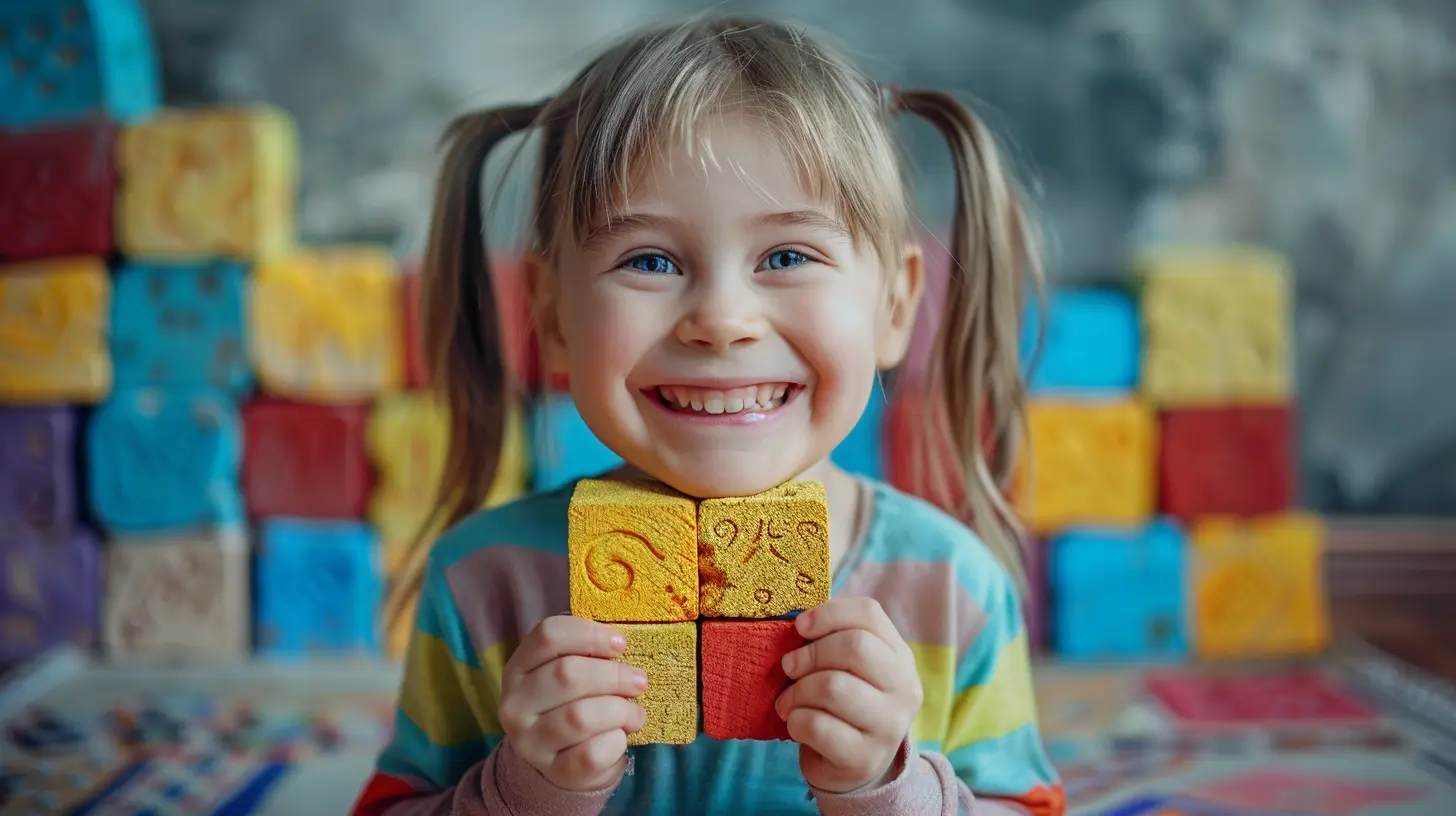How to Create a Self-Esteem Toolkit for Your Child
30 October 2025
Helping your child build self-esteem can feel like trying to catch a butterfly—delicate, fleeting, yet incredibly beautiful when it lands. You want your little one to grow up confident, capable, and kind. But in a world full of comparisons, challenges, and pressures, that’s easier said than done. That’s where a self-esteem toolkit comes in.
Think of it as a little backpack filled with emotional tools your child can pull out when life gets tough. You're not going to literally hand them a toolkit (though feel free to get crafty if that sounds fun!)—this is more about habits, mindset, and connection.
Let’s dive into how you can build this self-esteem toolkit, step-by-step. Get cozy, grab a cup of coffee, and let’s chat parenting.
Why Self-Esteem Matters (More Than You Think)
Self-esteem isn’t just about feeling good. It’s about knowing your worth, even when things don’t go your way. For kids, healthy self-esteem lays the foundation for everything—friendships, learning, resilience, and even how they treat others.When a child believes they’re valuable just as they are, they’re more likely to:
- Take on challenges
- Bounce back after a setback
- Speak up for themselves
- Treat others with kindness
- Avoid the toxic trap of perfectionism
Sounds important, right? That’s because it is.
Start with Love: The Foundation of the Toolkit
1. Unconditional Love and Acceptance
Every good toolkit needs a solid base, and nothing beats unconditional love. Your child needs to know they're loved not for what they do, but for who they are.Say it often. Show it through hugs, eye contact, and real attention. When your kid knows they matter no matter what, their confidence has room to grow.
> “I love you when you’re happy, and I love you when you're upset. I love all of you.”
Simple words. Big impact.
The Building Blocks of a Self-Esteem Toolkit
Once the foundation is set, it’s time to start adding tools your kid can use again and again. These will be skills, habits, activities, and even phrases that help them feel capable and valued.2. Positive Self-Talk: The Voice in Their Head
Let’s be honest—kids can be harsh on themselves. “I’m not good at this,” or “I’ll never get it right.” Sound familiar?Negative self-talk is like a bully that lives in your child’s head. So let’s help them become their own cheerleader instead.
Teach Them Affirmations
Give them simple, positive phrases they can repeat when things get tough:- "I can try again."
- "I'm still learning, and that's okay."
- "Mistakes help me grow."
Even better? Create a “mirror mantra.” Have them look at themselves each morning and say one of their affirmations out loud. Sounds cheesy? Maybe. But trust me—it works.
3. Celebrate Effort, Not Just Achievement
Here’s where we shift the focus from “being the best” to “doing your best.”Let’s say your child tries out for the school play. They don’t get the lead role, but they practiced every night for a week. That’s effort worth praising.
Instead of saying, “You were great,” try:
> “I’m so proud of how hard you worked and how brave you were to audition.”
This teaches them that their value doesn’t depend on winning or being the smartest kid in the room. It comes from showing up.
4. Let Them Make Decisions
Confidence grows when kids feel in control. Let them make age-appropriate choices:- Pick out their clothes
- Choose between two snacks
- Decide what book to read at bedtime
These little decisions add up. They help your child feel trusted and capable. Even if their outfit is mismatched from top to toe—let them rock it!
5. Teach Problem-Solving Skills
When a toy breaks or a friend says something mean, it’s tempting to swoop in and fix it. But solving problems for your child actually chips away at their confidence.Instead, guide them:
- “What do you think we could do?”
- “How might we fix this?”
- “Who could help with that?”
This trains their brain to think I can figure things out, which is a golden piece of the self-esteem toolkit.
6. Encourage Interests and Hobbies
Kids need to see themselves as good at something—whether it’s building LEGO cities or making up funny stories. It doesn’t have to be award-worthy. What matters is that they enjoy it.Support their interests, even if they’re not your thing. (Yes, even if you’re tired of hearing dinosaur facts 24/7.)
When they see you valuing their passions, they learn to value themselves.
7. Model Confidence and Self-Compassion
Ever caught yourself saying, “Ugh, I’m so bad at this,” in front of your kid?Kids are watching. Constantly. They learn how to treat themselves by watching how you treat yourself.
So try this:
- When you make a mistake, say: “Oops, I messed up—but that’s okay. Everyone makes mistakes.”
- When something’s hard: “This is tricky, but I’ll keep trying.”
You’re not just teaching them to be kind to themselves—you’re showing them how.
Emotional Tools: Feel It, Name It, Calm It
A huge part of self-esteem is emotional regulation. If a child can understand and manage emotions, they’re more likely to bounce back from setbacks and feel in charge of themselves.8. Name the Feelings
Kids often act out because they don’t have words for how they feel. Help them build a feelings vocabulary. You could use a “feelings chart” or just talk it out:> “Looks like you’re frustrated about that puzzle. Want to take a break and come back?”
Being able to name emotions is the first step toward managing them.
9. Create a Calm-Down Corner
Think of this as a “chill zone,” not a “time-out.”Fill it with:
- Cozy pillows
- Fidget toys
- Picture books
- A feelings chart
- Headphones with calming music
Let them retreat there when big feelings hit. It becomes their safe space—a self-esteem booster that says, I’m in control and I can help myself feel better.
10. Use Growth Mindset Language
Replace “I can’t do this” with “I can’t do this yet.”That tiny word—yet—opens a door in your child’s brain. It tells them that learning and growing are part of the journey, not signs of failure.
You can even make a poster together that says “Mistakes Help Our Brain Grow” and hang it where they’ll see it every day.
Keep Communication Open
11. Check In Daily
You don’t need an hour-long chat every night. But a few minutes of real conversation—eye contact, phones away—says you matter to me.Ask:
- What’s something that made you smile today?
- What was tricky or frustrating?
- Is there anything you need help with?
Open communication not only builds connection—it tells your child their thoughts and feelings count.
12. Encourage Journaling or Drawing
Not all kids are talkers. Some express themselves better through drawing or writing. Give them a feelings journal or sketchbook where they can pour out their private thoughts.This is big for self-awareness and confidence. Because understanding yourself is a superpower.
Tools for You: Support from the Sidelines
Let’s not forget—this parenting gig is no joke. You need tools, too.- Surround yourself with supportive friends or parent groups
- Read books on child development
- Give yourself grace on the tough days
You’re building a toolkit together. And every time you show up with love and patience, you’re handing your child another tool for success.
It’s a Journey, Not a One-Time Fix
Building self-esteem isn't a checkbox you tick. It’s a slow burn—something that’s crafted day by day with trust, connection, and a little humor.You don’t need to be perfect. You just need to be present.
So fill your child’s toolkit with love, resilience, and confidence—and watch what they can build with it.
Quick Recap: Your Child’s Self-Esteem Toolkit Essentials
- Unconditional love- Positive self-talk and affirmations
- Praise for effort, not results
- Decision-making opportunities
- Problem-solving support
- Encouragement of hobbies
- Emotion identification and calming strategies
- Growth mindset language
- Open and supportive communication
These tools don’t just help your child feel good—they prepare them to face the world with courage, curiosity, and compassion.
And honestly? That’s the kind of toolkit we all need.
all images in this post were generated using AI tools
Category:
Building Self EsteemAuthor:

Liam Huffman
Discussion
rate this article
1 comments
Kenzie Porter
In the garden of growth, nurture seeds of belief, With love’s gentle hands, cultivate joy and relief. A toolkit of praise, patience, and light, Empower your child to shine ever bright.
November 15, 2025 at 5:40 AM


